Minnesota invests in new Teacher Field School to scale up nature-based learning across the state
On a brisk Saturday in late October, teams of teachers gathered at a nature preserve just outside of St. Paul, Minnesota. Surrounded by hardwood forests and spring-fed wetlands, these educators were participating in an immersive nature-based field training, designed to help them transform their curricula, approaches to teaching, and ultimately, their school cultures.
Held over five weekends, this new Teacher Field School is a joint initiative of Hamline University, the University of Minnesota and Freshwater, a nonprofit working to preserve Minnesota’s waters and ecosystems. It is the first extended nature-based professional development series for teachers in Minnesota and one of just a few in the nation. Following a successful pilot for teachers at a K-5 charter school, organizers received a $500,000 grant from the Environment and Natural Resources Trust Fund of the Legislative-Citizen Commission on Minnesota Resources. This state funding will support field training for two cohorts of teacher teams from across Minnesota. The first cohort started during the 2023-24 school year, the second will launch in September 2024.
As the benefits of nature have become better known and as parents and teachers see the positive impact first-hand, demand for nature-based learning has increased.
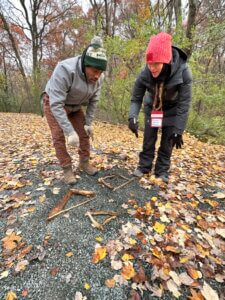
Teachers Carlos Stewart and Kristin Norton from Hamline Elementary School in St. Paul, Minnesota, develop a basic geometry lesson, composing and decomposing shapes with sticks and exploring spatial relations. The Teacher Field School intentionally trains teams of teachers across grade levels and disciplines to create supportive peer groups that can advance nature-based teaching within their schools and school districts. Photo by Children & Nature Network.
“With this Teacher Field School, we are trying to fill a gap in the system,” says University of Minnesota professor of pediatrics Dr. Cathy Jordan, who also serves as consulting research director for the Children & Nature Network. “Very few teachers have access to preparation that would allow them to approach nature-based education with confidence. We want to help them feel comfortable, confident and competent in using nature-based pedagogy. And, by bringing teams of teachers together in a series of retreats in nature, our Teacher Field School taps into some of the best practices in professional development: immersive in nature, experiential, sustained, and cohort-based.”
A shared dream come true
Creating a nature-based field school for teachers has been a 10-year dream in the making. Back in 2013, Dr. Cathy Jordan and Dr. Patty Born, program director for Hamline University’s Master of Arts in Natural Sciences and Environmental Education, realized their shared passion for bringing the benefits of nature to children. Neither were in a position at that time to launch a new program, but they kept sharing ideas and continued to build the evidence base for learning in nature.
Fast forward seven years. In late 2020, Dr. Carrie Jennings, research and policy director for Freshwater, “cold-called” Cathy Jordan to talk about nature-based learning. What emerged was a joint interest in bringing nature-based practices to Minnesota teachers – and ideas for funding. Carrie then recruited Dr. Kate Pound, currently a geology professor at Gustavus Adolphus College, and a full-scale collaboration began. Even the COVID-19 pandemic couldn’t deter these four kindred spirits. They launched a pilot field training series in 2021, with support from the Manitou Fund.
“The pandemic was contributing to a significant mental health crisis for children and youth. Teachers were on the front lines of that crisis,” says Cathy. “Because time in nature can help reduce anxiety and help kids recover from trauma, we knew there was no time to waste in advancing nature-based pedagogy and practice.”
Big benefits for students – and teachers
Carrie Jennings notes that development of the Teacher Field School was based on three fundamental and evidence-backed beliefs: that nature-based education is better for the physical, emotional and social health of students and teachers; that it can improve learning outcomes equitably; and that it can inspire a love of the natural world.
“Nature-based education has many co-benefits, promoting all kinds of well-being including physical, mental and social-emotional,” adds Patty Born. “These are important areas of development for children, as well as things that schools care about. Nature can help schools support the whole child.”
Evidence also points to the equigenic effect of nature access. “Nature-based learning creates equitable educational experiences because of the many interdisciplinary connections afforded through nature,” says Cathy Jordan. “It taps into multiple ways of learning, promotes attention and decreases stress. These are cognitive and mental health factors that set everyone up for optimal learning.”
Spending time in nature during childhood and role models who care for nature are the two biggest factors that contribute to environmental stewardship in adulthood, according to a number of studies. “Being in nature will make you appreciate nature,” concludes Carrie Jennings. “And when students have positive relationships with the natural environment, they are more likely to protect it.”

Teachers Eric Wulff and Elizabeth Kinville from the School of Engineering & Arts in Golden Valley, Minnesota stop to look at a mushroom growing along the trail. Role models who enjoy and care for nature are a key factor in helping children develop a conservation ethic. Photo by Children & Nature Network.
The benefits of nature-based education extend beyond students. Zach Johnson, a teacher at the School of Engineering & Arts in Golden Valley, Minnesota, says the training encouraged him to take time to slow down to enjoy the natural world.
“I have the little ones at home,” says Zach. “When we’re walking to school, it always feels like we’re on a timeline. But when my kids want to stop and look at something in nature, how can I better encourage that exploration and make time for it? And how can I bring time for discovery into my teaching process? As teachers, we face so many expectations, like testing and getting through curricula at a certain rate. This training emphasizes taking time for mindfulness, that we center ourselves in nature so that we can bring our best to our students and ourselves.”
Creative lessons, differentiated learning
“Teachers are always looking for ways to support the wide range of learning styles in their classrooms,” says Kate Pound. “We want to give teachers the power of nature because we know that it can enhance their experience as educators, support differentiated instruction, provide rich sensory input, and enhance kids’ creativity, problem solving, cooperative skills, and so much more.”
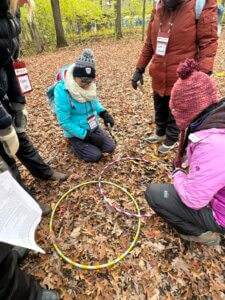
Teacher Field School participants develop engaging lessons in early math skills. Lessons like this can work in any outdoor setting, even on school grounds without abundant greenspace. Photo by Children & Nature Network.
Nature play is very effective in teaching early math skills. Kids can collect natural items and practice skills like counting, sorting and measuring. Pro tip: A hula hoop provides a focal point that helps focus students’ attention in open spaces. “We can zoom in and notice how many acorns are in the hoop,” says teacher Janel Flynn from Cedar Park Elementary School in Apple Valley, Minnesta. “We can observe that there are more leaves than acorns. We can talk about patterns, compare different sizes of acorns, and talk about what we see using math concepts.”
Lessons for older elementary grades can be equally hands-on and creative. “We were tasked with developing a lesson that would ask students to create an economic system using loose parts from nature,” says Tobi Kreifels, another teacher from Golden Valley’s School of Engineering & Arts. “We thought it would be fun to have the children set up an outdoor nature store, where they would find things in nature to be their currency to trade, with different types of scaffolding, starting with just finding materials to sell, to establishing the value of those materials, to making change while trading, to talking about scarcity when they can’t find enough of a certain material.”
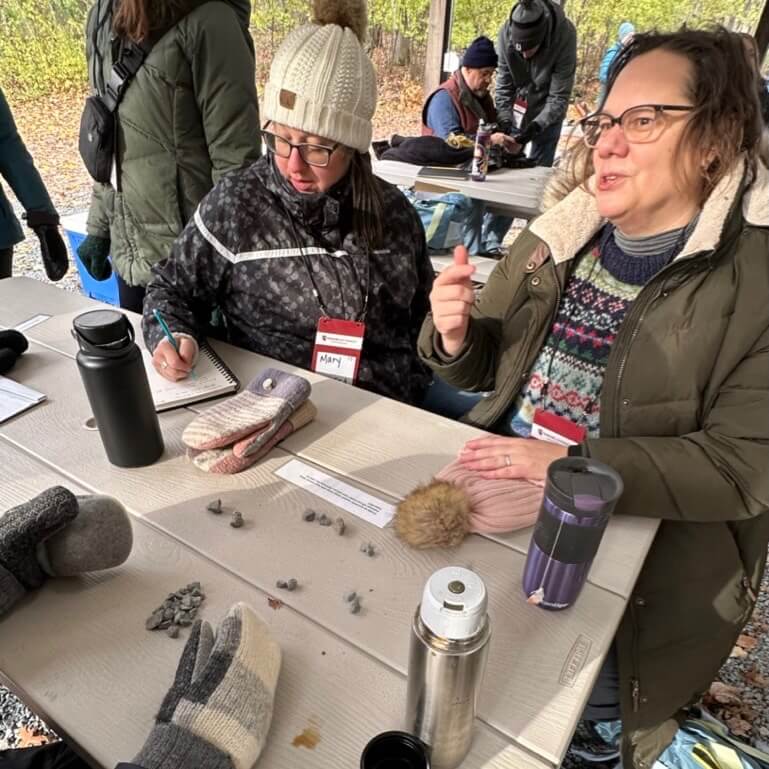
Teacher Tobi Kreifels (right) from Golden Valley’s School of Engineering & Arts and colleagues develop a scaffolded economics lesson in which students create an outdoor nature store. Photo by Children & Nature Network.
While nature-based learning is often associated with STEM education (science, technology, engineering and math), all subjects benefit from an infusion of nature. “Research shows that when kids are indoors, they use a lot of nouns,” says Cathy Jordan. “When they are outdoors, they use many more verbs, adverbs and adjectives – a huge leg-up in language development. In nature, things are moving in ways that encourage kids to use action words and to describe what they see happening around them.”
“In all of the lessons that teachers developed during our Teacher Field School, there were ways for children of differing abilities to participate in a meaningful way,” says Kate Pound. “Learning in nature provides opportunities for students with ADHD, emotional behavior disorders, and other disabilities to be more successful in school.”
Nearby Nature
Most schools are not situated in the middle of a forested nature preserve, but all schools have some form of nearby nature. Training organizers want to equip teachers with nature-based practices that can be adapted to any environment – and teachers are incredibly creative in connecting students to the natural world right outside their classrooms.
“Even though we don’t have the woods right in our backyard, we can make nature accessible to our kids by just looking out the window or walking outside to admire trees and birds,” says Carlos Stewart, a teacher at Hamline Elementary School in St. Paul, Minnesota. “I know how important nature is for the young people we work with, who are mostly Black and brown kids, and kids from under-resourced communities.”
“I am participating in this training because I love my students. It has already changed my approach to teaching,” Carlos continues. “If I have a student who is having a hard time, we’ll take a short walk outside and just feel the breeze or notice a tree. We’ll probably speak no more than ten words, but I can see the shift, it happens so fast. I’ll ask, ‘how are you doing now,’ and the student will alway say, ‘I’m better, I feel calmer.’ All that, right outside the window.”
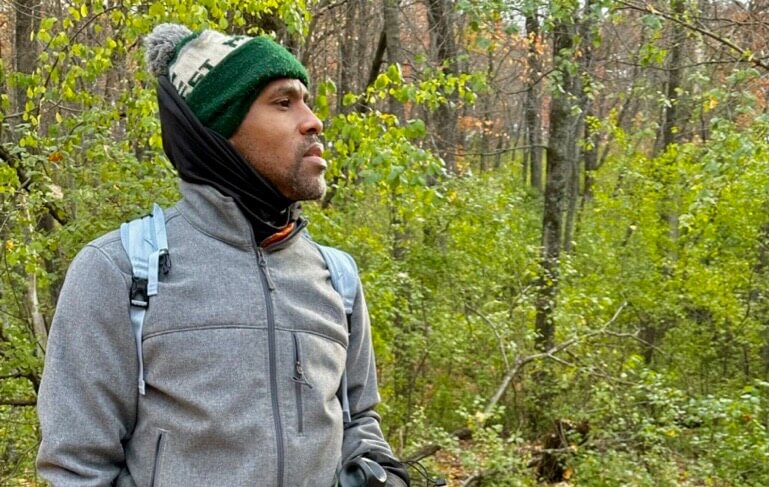
Hamline Elementary teacher Carlos Stewart reflects on the importance of nature for his students and how even a short time outdoors can have a calming effect that supports learning. Photo by Children & Nature Network.
Looking forward
Interest in nature-based education is growing. In June of 2023, Hamline University became the first institution in Minnesota to offer a Nature-Based Early Learning Certificate, building on a long legacy of preparing teachers and advancing environmental education. More than 170 Minnesota educators expressed interest in attending the Teacher Field School. Internationally, Scandinavian udeskole (outdoor school) education continues to deliver positive learning outcomes; the global greening school grounds movement is gaining momentum; and in late 2023, the International Union for the Conservation of Nature (IUCN) Commission on Education and Communication published its first technical brief on nature-based education, which was presented at the COP28 United Nations Climate Change Conference.
Teacher Field School collaborators Cathy Jordan, Patty Born, Carrie Jennings and Kate Pound see their field training series as the first step in creating an institute for nature-based learning. In addition to providing nature-based professional development, the institute would scale up nature-based learning research and its translation to practice and policy – and convene communities of practice for peer learning and mentoring. The group is actively seeking funding to expand training, launch the institute and support additional research on the impact of nature and outdoor learning on children’s learning, well-being, brain development and more.
“We are excited to prepare Minnesota’s current and future teacher workforce to be nature-based educators to support the health, well-being and academic success of children across the state,” concludes Patty Born.
To learn more about the nature-based Teacher Field School, click here.

Teachers Kelli Ellickson and Tony Olson from Cedar Park Elementary School in Apple Valley, Minnesota, display lessons they developed during Teacher Field School. Kelli notes how important it is for the teachers on her team to be immersed in nature so that they can see how pivotal it would be in their students’ learning. Toby adds, “We were very purposeful in bringing all of our grade levels and disciplines and specialists here. Our end goal is to make a cultural change in our school, to bring nature-based learning to all of our students, many who come to us without a lot of exposure to nature.” Photo by Children & Nature Network.
2 Comments
Submit a Comment
Academic Benefits of Nature, infographic
Hamline University Nature-based Early Learning Certificate
Antioch University MEd in Nature-Based Early Childhood Education
Watershed School keeps kids connected to nature, at home, a Finding Nature News story, January 2021
Sowing seeds for healthy habits: Farm to Early Care and Education, a Finding Nature News story, April 2022
-
Voices
CAMPING WHILE PARENTING: A Mother-Son Adventure
-
Feature
A common thread: Indigenous-led foundation weaves together activism and art, climate and community
-
Network News
Community Spotlight: Prescribe Outside
-
Voices
That’s nice, mija: Finding common language in nature connections
-
Richard Louv
"HUMMINGBIRD PARENTS": Seven Actions Parents Can Take To Reduce Risk And Still Get Their Kids Outside


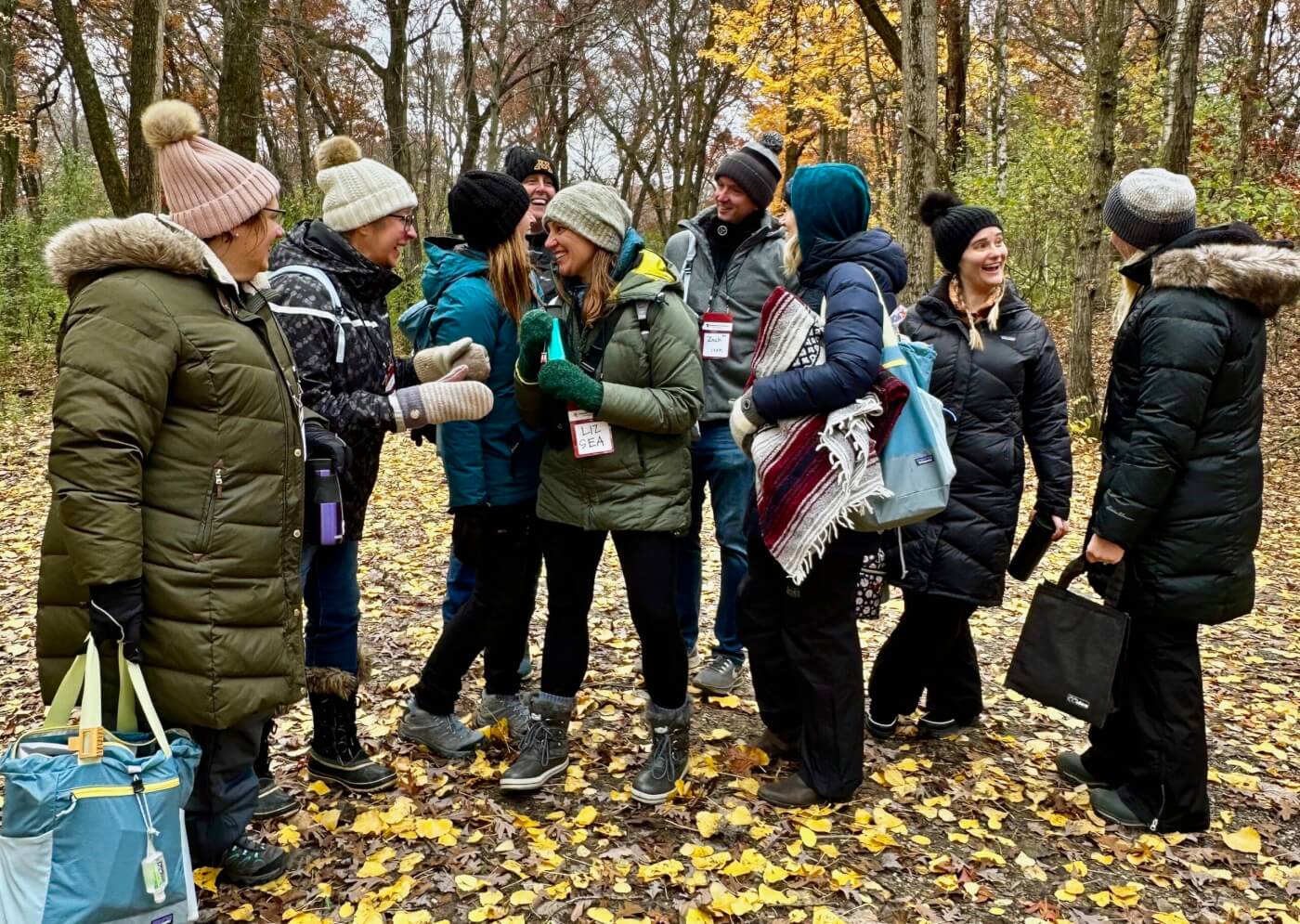
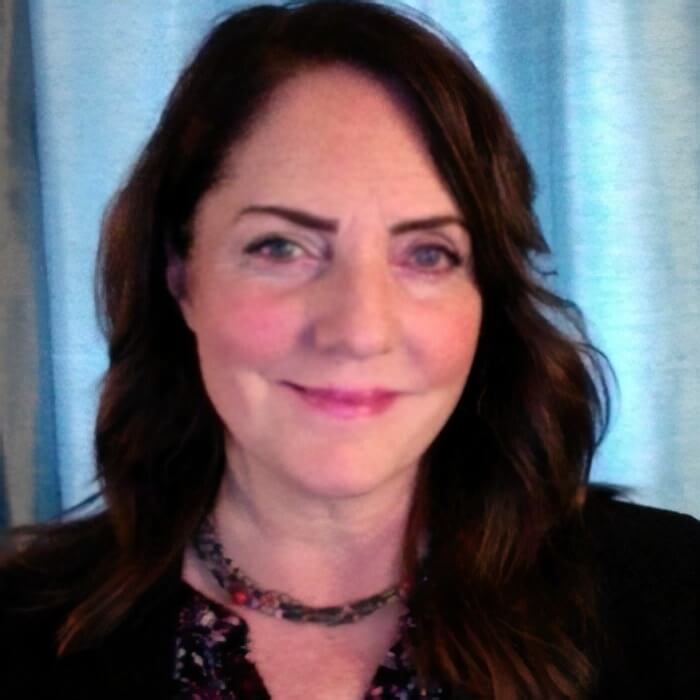
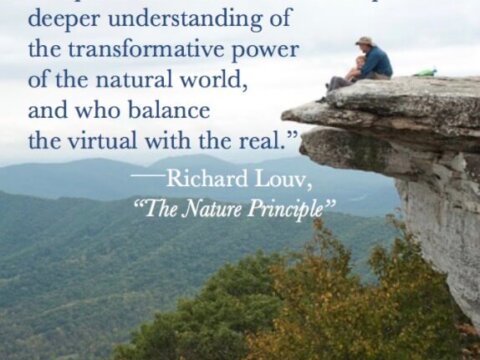
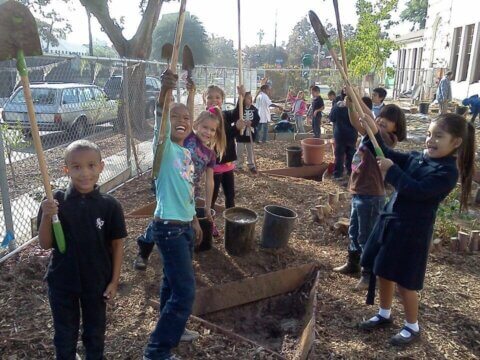

Outstanding story about a great project! Thanks Laura Mylan for the reporting on this important work!
Thanks to you, Cheryl Charles, for launching our work to curate research that supports nature-based learning!